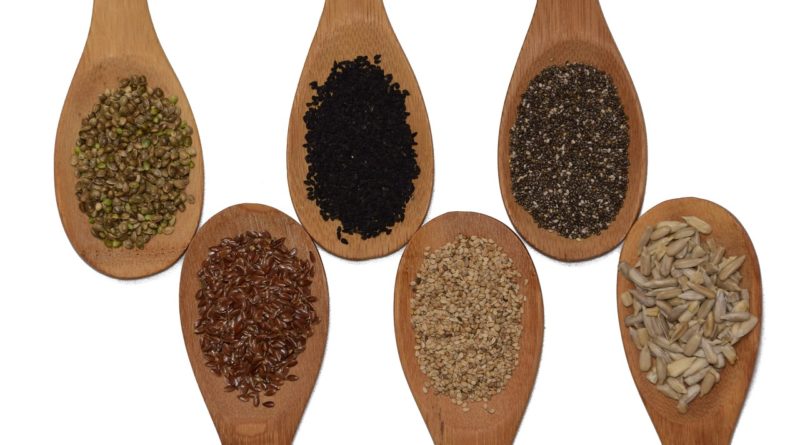Everything You Need to Know and More About Seed Cycling
Seed cycling is a practice that has been around for several decades, but it’s only recently become popular with the advent of information sharing on the internet.
The basic idea behind seed cycling is to eat certain seeds at different times during your menstrual cycle. It’s a safe and effective way to restore balance in your body and manage hormonal imbalances.
What is Seed Cycling?
The seed cycle is the rotational consumption of certain seeds during your menstrual cycle. It’s a way to work with your body and nature to restore balance, support fertility, and bring harmony to your cycle.
Related Article: Bloating and Estrogen — Can DIM Help Solve This Issue?
Seed cycling is a natural remedy that supposedly balances hormones by regulating estrogen during the first half of your menstrual cycle and progesterone during the second half.

It is claimed to help regulate periods, reduce acne, treat polycystic ovarian syndrome (PCOS), endometriosis, and infertility, ease symptoms of menopause like hot flashes and mood swings, and more.
How Does it Work?
Seed cycling aims to help you balance your hormones by using food to reset how your body produces specific hormones.
Related Article: 7 Amazing Health Benefits of Pumpkin Seeds
Women’s bodies produce specific amounts of estrogen and progesterone during their menstrual cycles. Women with too much estrogen can experience bloating, weight gain, and other premenstrual syndromes (PMS) symptoms. If they have too much progesterone, they may experience breast tenderness or irritability.
Seed cycling helps balance these two hormones by introducing them differently throughout the month. On days 1-7, during the follicular phase, women should eat seeds that boost estrogen to encourage ovulation and increase fertility. On days 8-14, during the luteal phase, they should eat seeds that boost progesterone and eliminate excess estrogen, so their cycle returns to normal after ovulation.
Causes of Hormonal Imbalance in Women
Hormonal imbalance happens when there are too many or too few hormones in the body. This can occur due to disease, disorders, and other conditions like stress or anxiety.
The most common cause of hormonal imbalance in women is due to Polycystic Ovary Syndrome (PCOS). This condition has high levels of male hormones and a lack of female hormones. This can lead to infertility, acne, weight gain, and hair loss.
Other significant causes include hypothyroidism and menopause. Hypothyroidism is caused by the underproduction of thyroid hormone (thyroxine). It results in symptoms like fatigue, weight gain, and constipation.
During menopause, a woman’s ovaries produce less estrogen and progesterone, which causes her reproductive system to stop working correctly. The changes experienced during menopause can cause several symptoms, including hot flashes, night sweats, vaginal dryness, and mood swings.
Click here to continue reading…


*Disclosure: This article may contain affiliate links or ads, which means we earn a small commission at no extra cost to you if you make a purchase through these links. These commissions help support the operation and maintenance of our website, allowing us to continue producing free valuable content. Your support is genuinely appreciated, whether you choose to use our links or not. Thank you for being a part of our community and enjoying our content.
PLEASE CONSIDER SHARING THIS ON YOUR SOCIAL MEDIA TO HELP OTHERS LEARN MORE ABOUT THIS TOPIC. SIMPLY CLICK BELOW!





